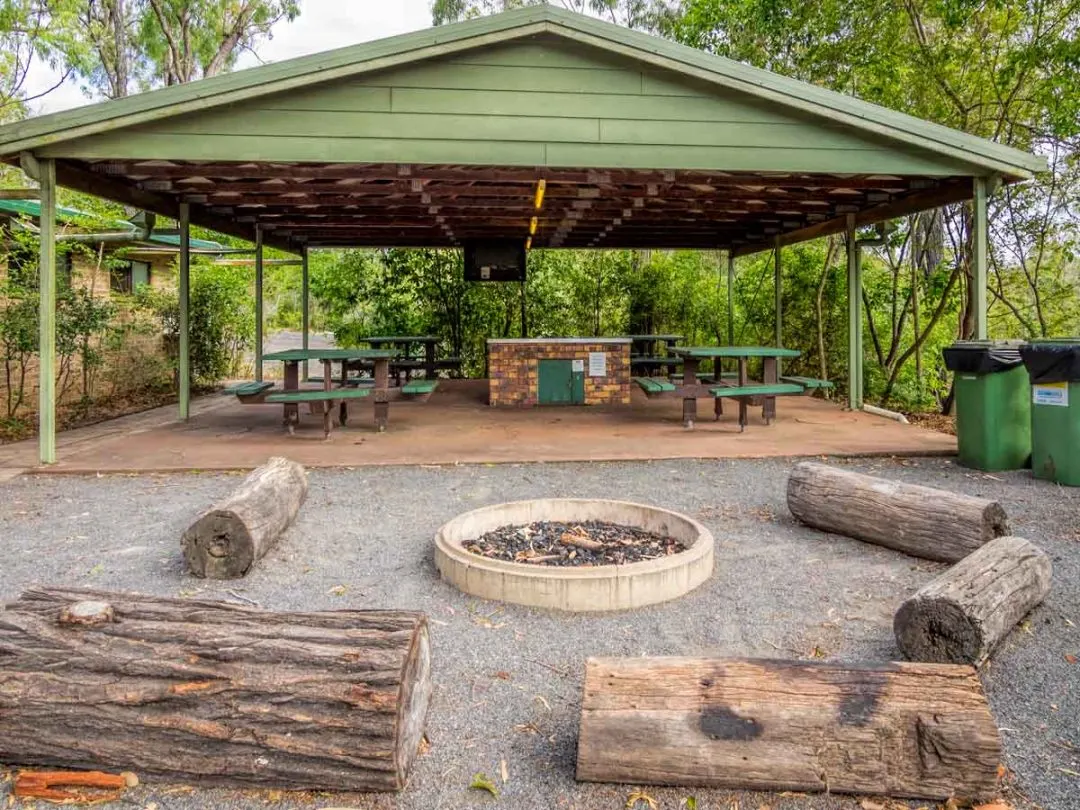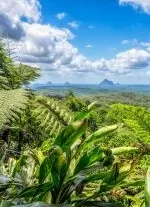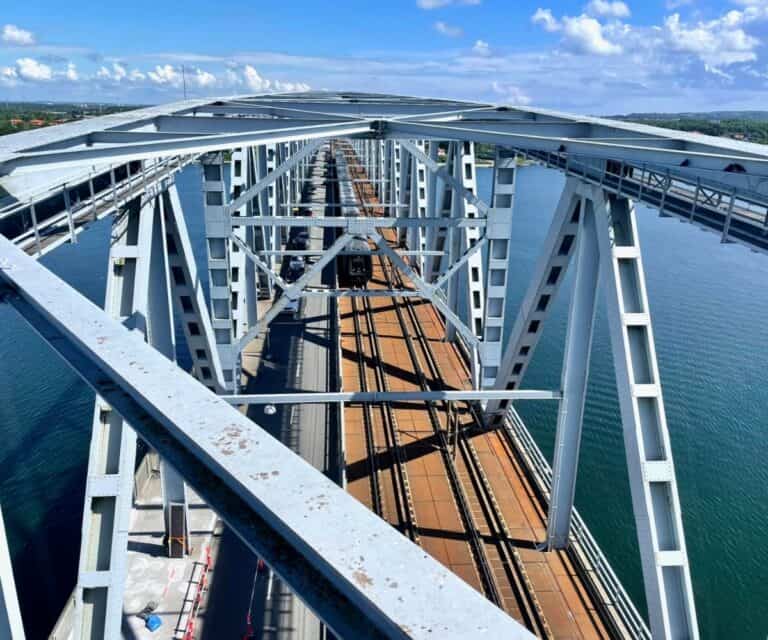Are you interested in exploring a part of Australia’s history that dates back 390 million years? The Capricorn Caves not only offer the experience of discovering the impressive cave system with either a walking tour or an adventure caving option, but they also introduce a unique dry rainforest environment that’s home to a diversity of birds and wildlife.

Table of Contents
Where are the Capricorn Caves
The caves are 23 kilometres north of Rockhampton or an easy 35-minute drive from the city up the Bruce Highway. It’ll take about the same time from the beachside town of Yeppoon.
You can reach the caves entirely on sealed roads although your GPS may have other ideas and try taking you under a low bridge onto gravel at Fourteen Mile Road. Stay the course on the Bruce Highway (Pacific Coast Way) turning onto Barmoya Road at the Country Pub, it’s a straightforward 4.4km sealed road up from there.
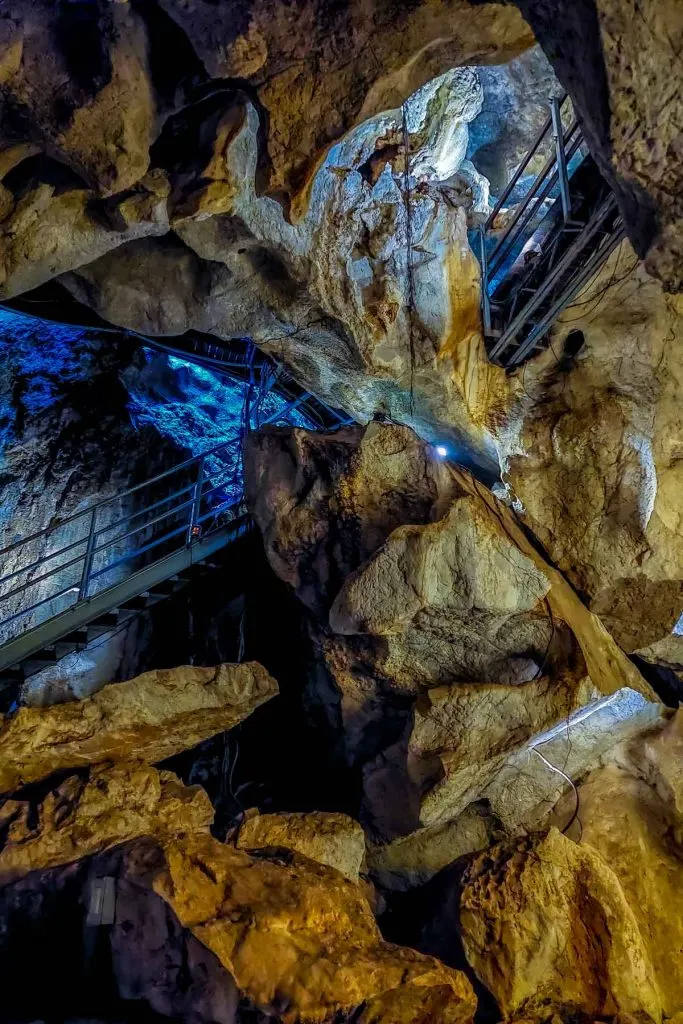
There are no major hills and it’s an easy drive with an RV or caravan. Whether you are staying up here for a night or two in their camping ground or just exploring for a few hours there is a good amount of dedicated parking for cars and larger rigs.
Exploring the Capricorn Caves
The cave system was formed from an ancient Gondwana reef deep under the ocean, its origins were here long before Australia physically split and drifted away from Africa, South America, India and finally Antarctica.
Corals grew on the reef and together with calcified marine shells and limey mud they compacted to form limestone which was then thrust upwards as the earth cracked and folded emerging from the sea to form land.
Ongoing movement in the earth formed cracks and groundwater flowed through enlarging them, the acidity in rainwater seeped down and began to dissolve the alkaline limestone forming the caves. Meanwhile, on the surface the distinctive karst typography formed, this is easily viewed today from the main car park.
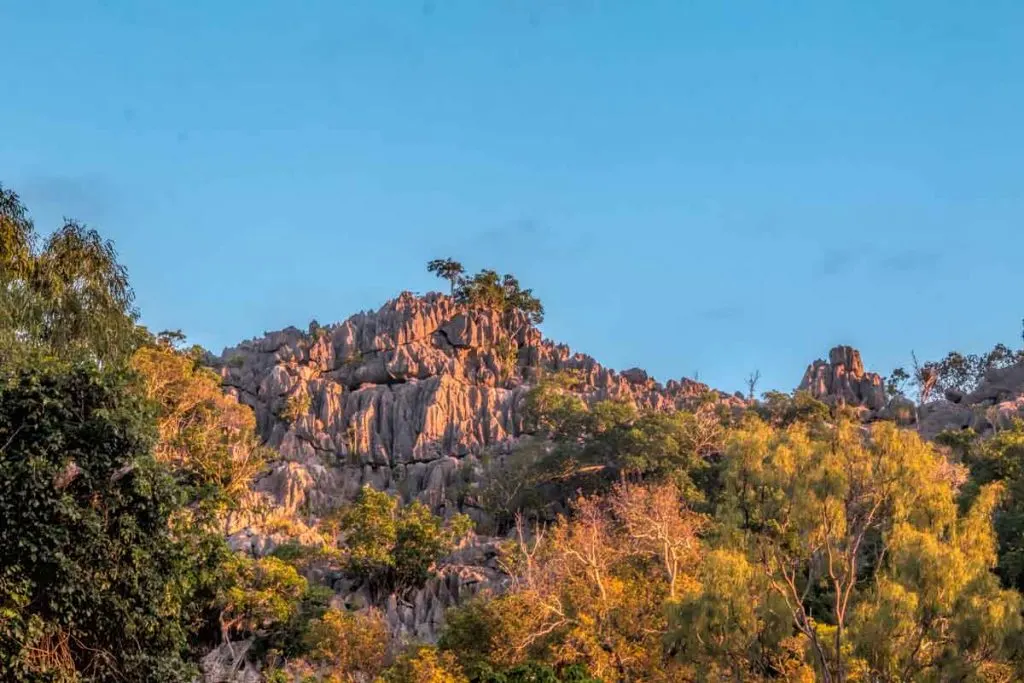
An unusual feature of the Capricorn Cave system is that you climb up through its labyrinth not descend down into it as you do in most of the cave system’s we’ve visited including the Jenolan Caves in New South Wales and the Waitomo cave system in New Zealand. That doesn’t mean it doesn’t mean that the limestone structure doesn’t extend down deep beneath your feet and one day those lower chambers will make themselves known but those changes occur over lifetimes not years.
These are technically dry caves in that they don’t have their own active water source so the limestone is only active during and after rain. Because of this, you will see the familiar cave structures including stalactites (hanging down), Stalagmites (growing up) and columns where the two have joined but they aren’t as common as you’d see in wet caves like Jenolan and Waitomo.
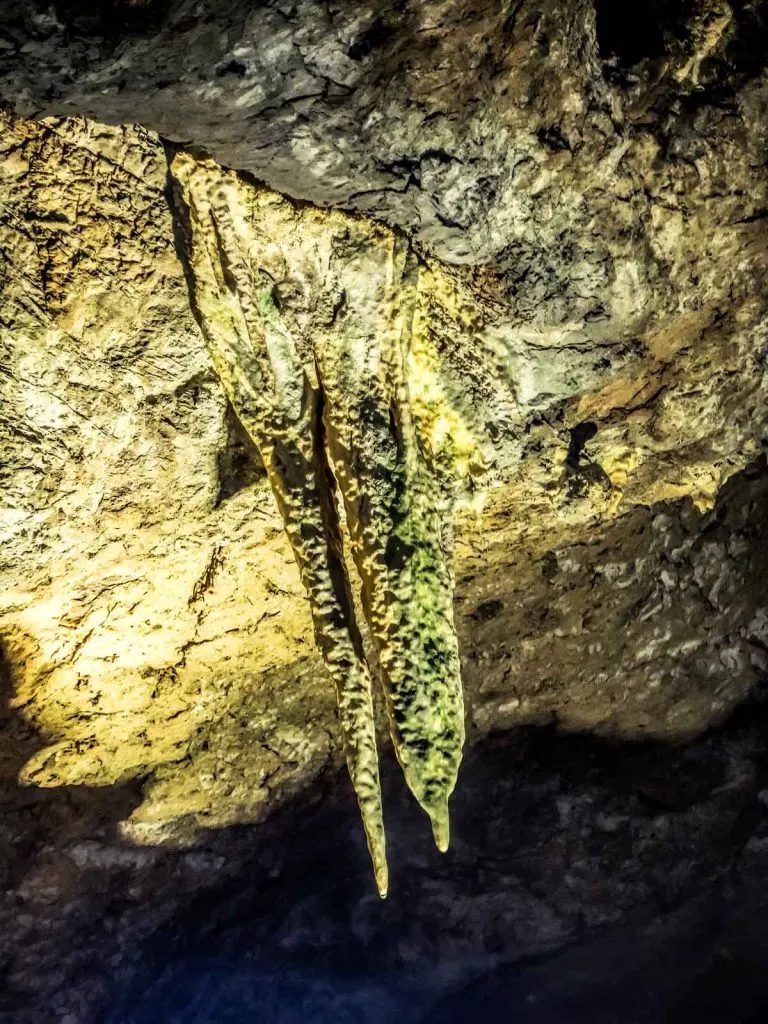
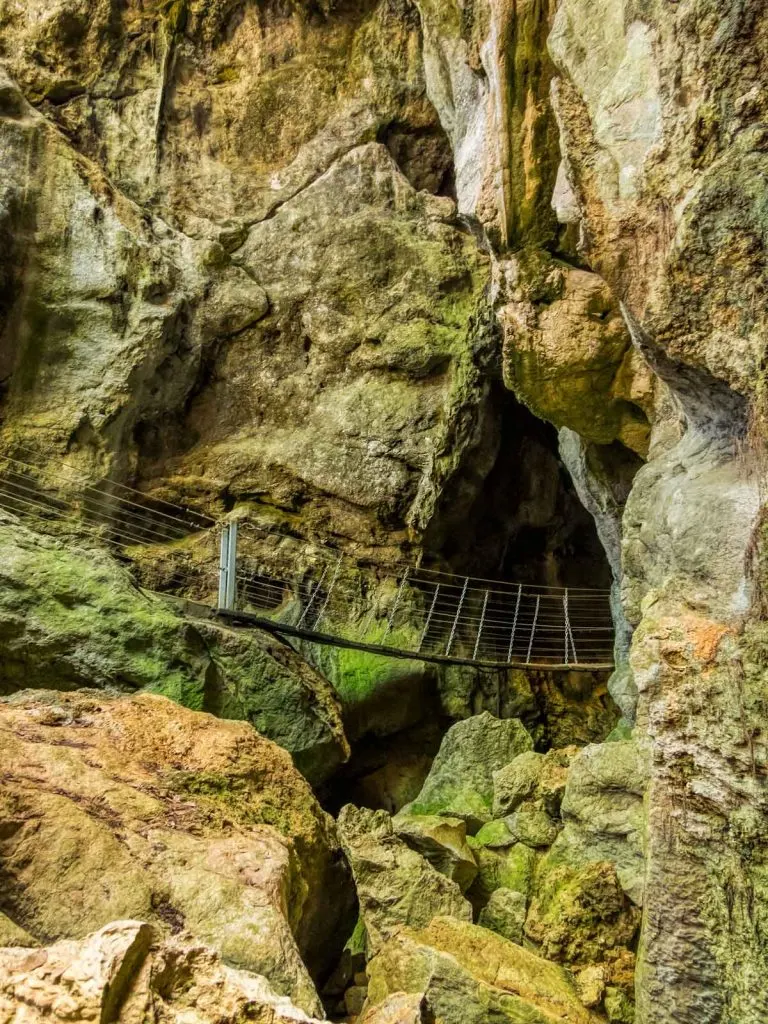
As you are guided through the chambers of the caves on the Cathedral Cave tour you’ll be asked not to touch the delicate walls as the oils in our hands and even delicate contact can cause damage but you might wonder why no one is as bothered about the impact of hundreds of feet.
An interesting insight from our guide, Phil, was that what we are walking on is no longer the delicate limestone but layer upon layer of dried and compacted bat poop. He built a picture of what that might have looked like back when John Olsen originally explored the caves in the late 1800s. Back then a wide variety of wildlife lived down there, you had only the light of a candle to see and were likely wading over uneven ground, trying not to do any damage and up to your ankles or beyond in guano (bat poop). Today you get a brief whiff of bats here, significant number of them still make their home in the caves but you can barely imagine what that would have smelt like back then.

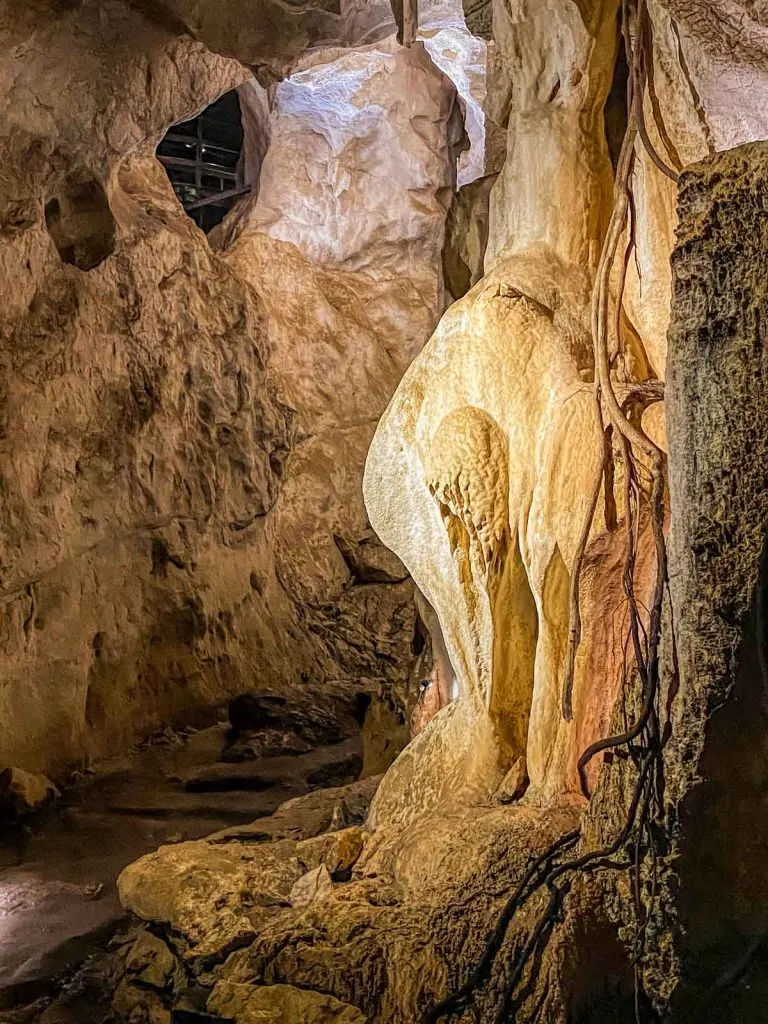
The Capricorn Cave system is made up of a number of caverns or individual caves, the rough map is displayed outside and each section has been given its own name based on a distinctive feature. The one shown above is the Camel cave, can you see it? Spoiler alert, you aren’t looking at his face.
There are all sorts of surprises within the caves. Phil also points out a small fern growing on the cave wall, it’s Tectaria Devexa or Capricorn Cave fern, a common fern if you are in Vanuatu or Sri Lanka but here in Australia it’s part of a relic population only known to occur in the caves district in Central Queensland.
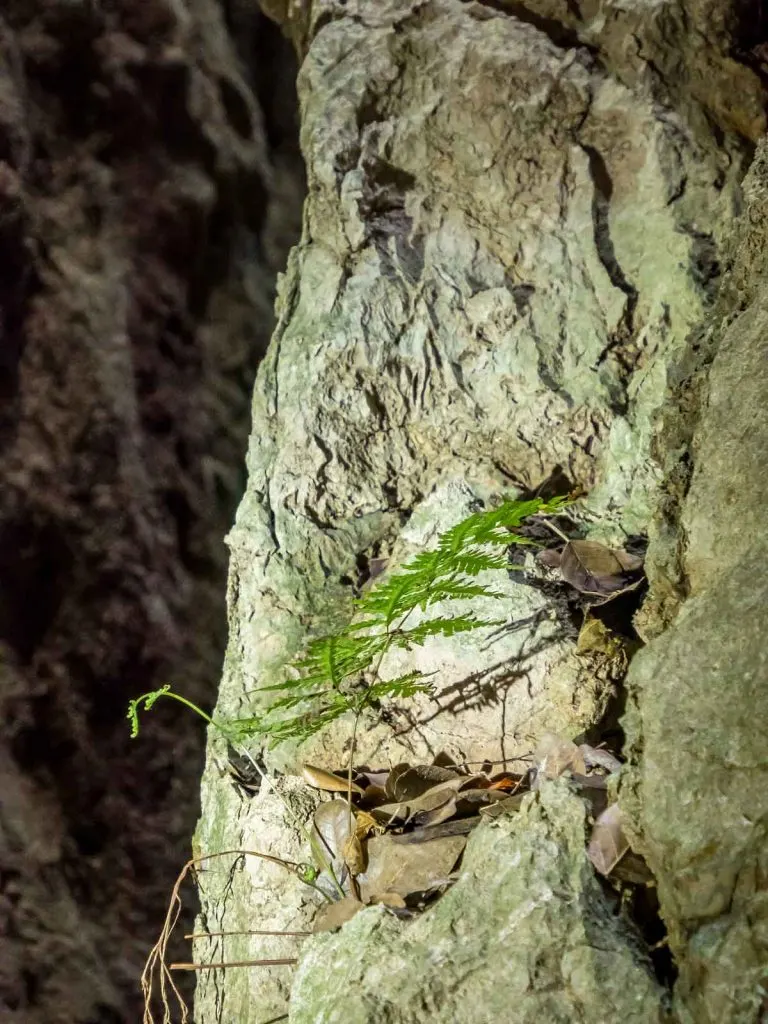
Around 15 years ago it was on the brink of extinction here, only 21 plants were known to have survived in the small sections of cave walls with the exact right balance of moisture, light and organic matter to support them. A collaborative project then set about collecting the spores and growing them on before they were reintroduced to the cave ecosystem. They are far from prolific but once they are pointed out you can make out others in various spots around the cave walls.
Our guide Phil was absolutely exceptional, his experience spans from London’s Natural History Museum to the Smithsonian, it’s impressive to combine that level of research skill and academic understanding but to be able to communicate it in such an engaging way and without visible frustration to your average tour group is something else. We gathered from others we spoke to during our visit that the knowledge and passion of the guides for this beautiful area is shared right across the team.
Who owns the Capricorn Caves
The cave system was discovered by John Olsen and his sons while trekking in the largely unexplored area back in 1882. He lowered himself into an opening and began exploring with the aid of a rope and a candle and even with that little light he knew he’d stumbled onto something very special.
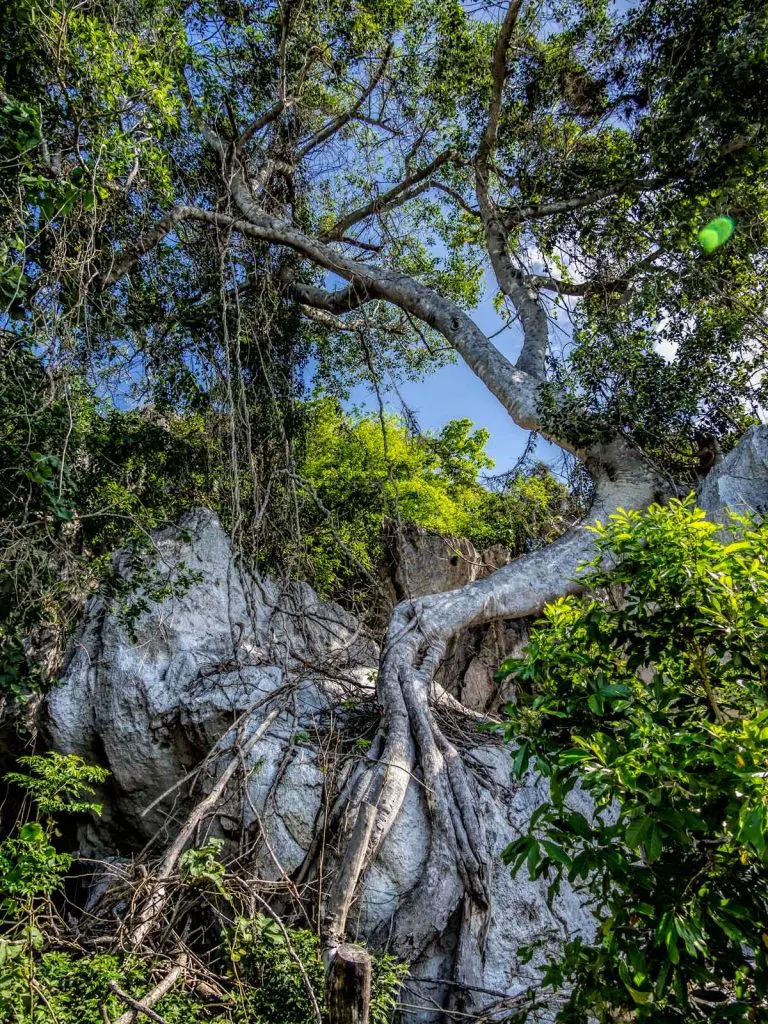
He staked his claim as you did back then by marking a survey tree, careful to keep the cave’s existence concealed until his title was confirmed. He then opened them to the public. It stayed in the Olsen family until 1988 when Ken and Ann Augusteyn purchased it and, on their passing, its guardianship is now in the hands of their son John.
Fortunately, all the owners have appreciated the importance of being custodians of the natural space, its geology, flora and fauna. Each has protected and enhanced the area sharing it with the public, today it has an important role in the education of the next generation and is regularly used for school stays.
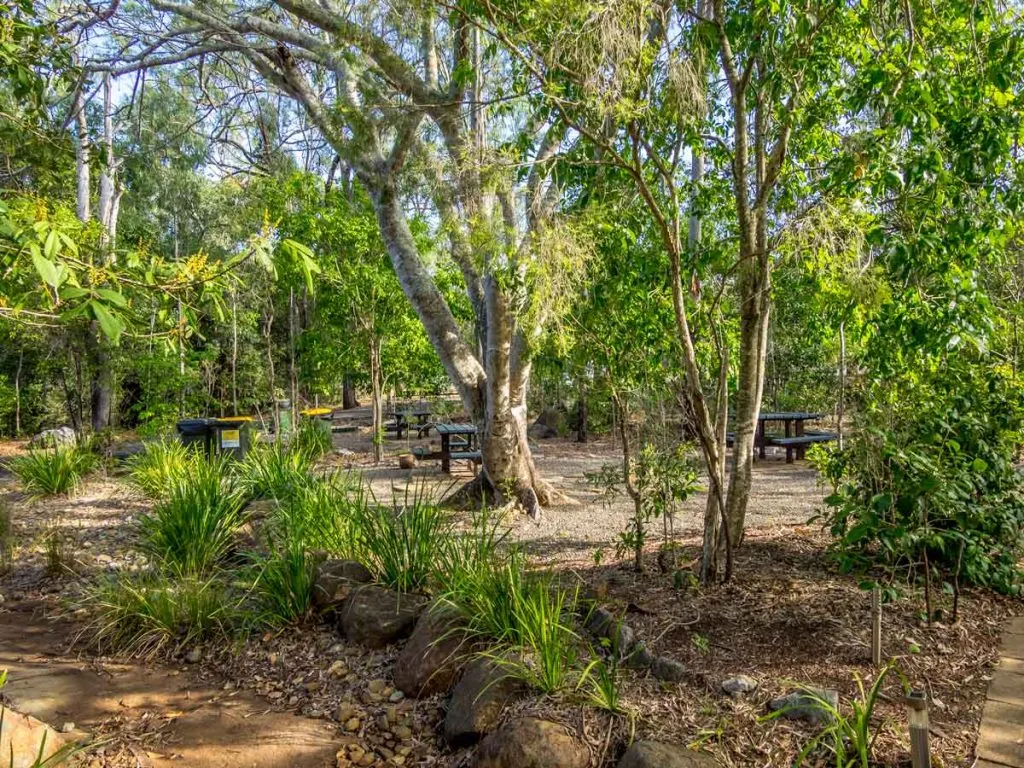
John is committed to conservation in his work with Queensland Parks and Wildlife and has extended this on the Capricorn property making use of electric carts, solar, water collection on the property and a program of replanting the dry rainforest from seed stock collected locally.
What the heck is dry rainforest?
It’s an oxymoron for sure but the natural ecosystem up here really is called dry rainforest and it’s not that common.
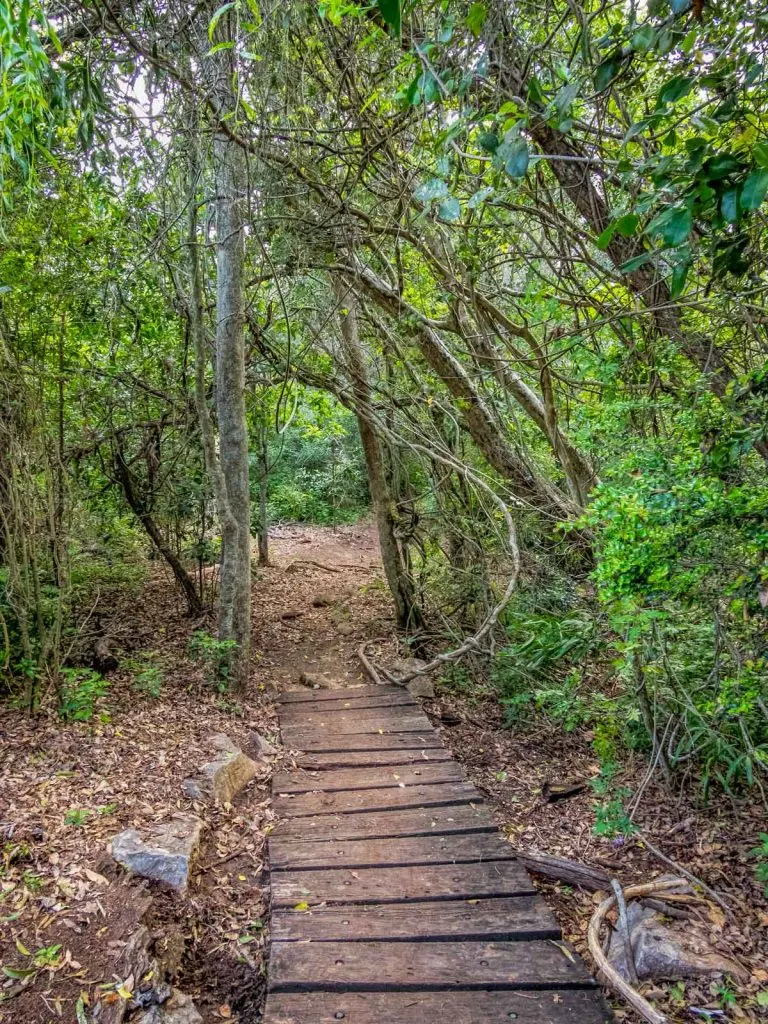
Rainforests occur across Australia from North Queensland to Tasmania and are classed into 5 main types: tropical, subtropical, warm-temperate, cool-temperate and dry. The first 4 refer to the climate of the region and can be divided by geographical lines, dry rainforest is a little different and usually occurs where the soil is rocky and the topography means the weather pattern has distinct dry spells throughout the year.
Within the dry rainforest, you may find flora such as hoop pine, eucalypt, teak, epiphytes within the trees and rocky crevices, and large vines some softly rambling up to the canopy, others spiky like the wait-a-while vine.
Unique wildlife past and present
Around the caves today you may see native Australian wildlife including wallabies, kangaroos and echidna especially if you are staying up here and have the opportunity to walk around at dusk or early in the morning.
It’s also an excellent spot for birding, we saw a tawny frogmouth on its nest, channel billed cuckoos, pheasant coucal, a variety of honeyeaters, black kites and wedge-tailed eagles.
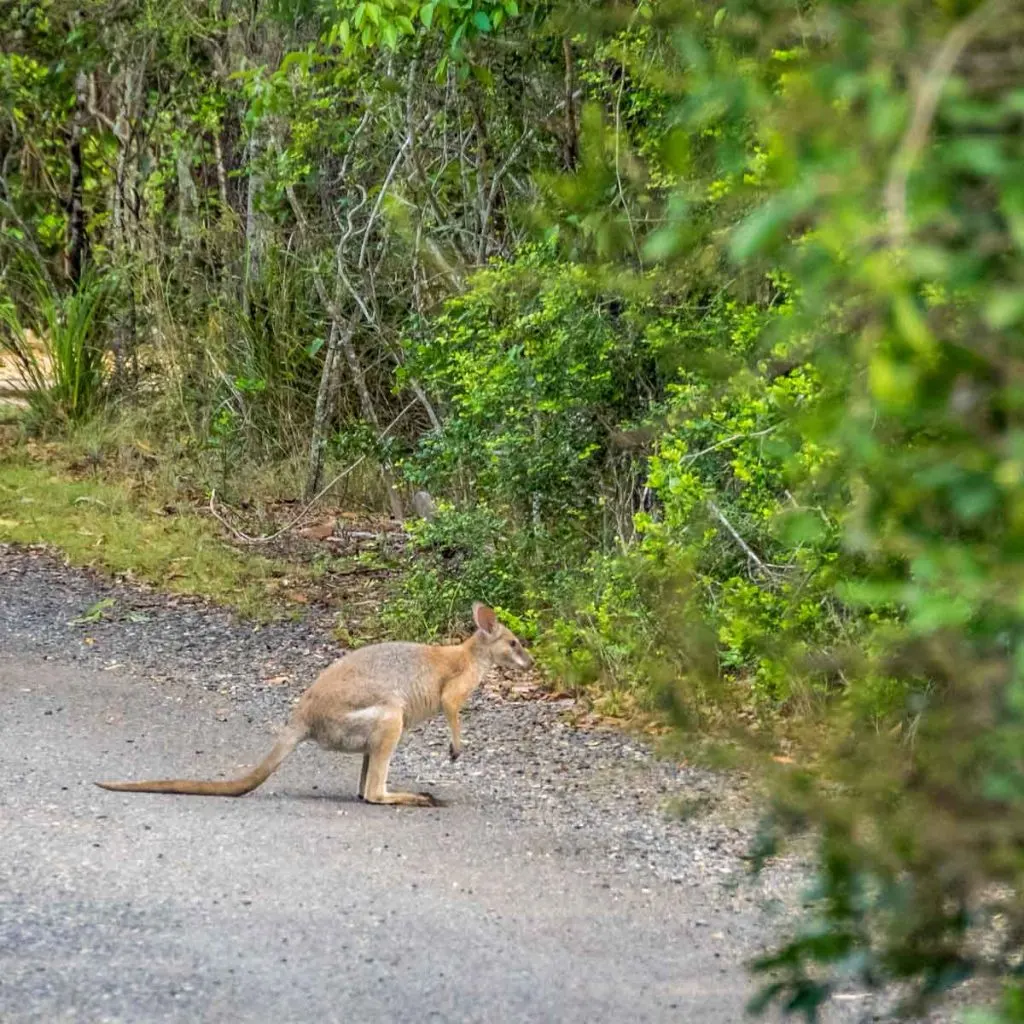
What’s really unique and special about the location though are the bats. Bats might not be everyones’ favourite furry critters but they are essential to our ecosystem and a fascinating animal. On the caves tour, you’ll see plenty of them, the caves are home to little bent wing bats that flit around above your head while you are in the caves and in the trees outside around dusk. The rare ghost bat, a larger carnivorous bat, almost the size of a fruit bat, has also occassionally been seen here.
Not far away is the Mount Etna Caves National Park and if you are visiting during the summer period this is the roosting site for more than 80% of Australia’s bent-wing bat breeding population. The walkway is closed from December to February when guided tours run on Monday, Friday and Saturday nights along the 2.4km track to see the spectacular nightly show as thousands of the tiny bats fly out from the roost to feed.
The Capricorn Caves have also revealed some interesting insights into our past Australian fauna with palaeontologists recovering a couple of Tasmanian Tiger teeth within the caves that indicate that they may have survived on the mainland much longer than was previously thought. It certainly gives pause for thought as to what might have been rustling around down there beyond the candlelight of the early explorers.
Staying at the Capricorn Caves
During 2021 the caves accommodation has been open to book during school holidays and in use by school group visits during the rest of the year but soon things should fully open up again and we’d highly recommend having a night or two out here to make the most of your visit if you can.

The campground has both powered and unpowered sites, there is a large facilities block with toilets, sinks and showers, a laundry, camp kitchen and communal fire pit. Within the laundry, there is even a small microwave available. There are also self-contained cabins to rent if you prefer.
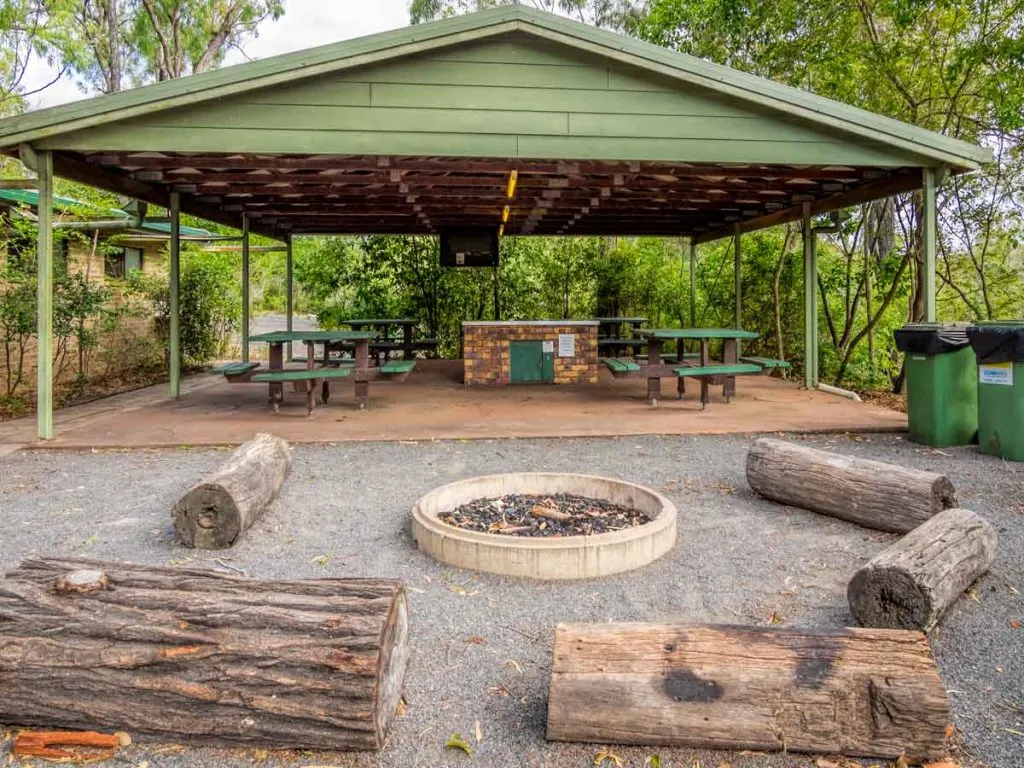
See all accommodation options available at the Caves.
As dusk closes in it’s worth a walk down to the main car park again and the picnic areas under the trees there. You’ll almost certainly pass wallabies on the grass and in the bush to the side of the road and the trees surrounding the car park are full of tiny bats. When you learn that colonies of these bats can consume several kilograms of mosquitos every night you quickly start to love them and wonder how you can help increase their numbers in your local area.
If you found this article useful please consider saving it to Pinterest. It makes it easy for you to find it again, it helps us, and it helps other travellers to find the information they are looking for.
